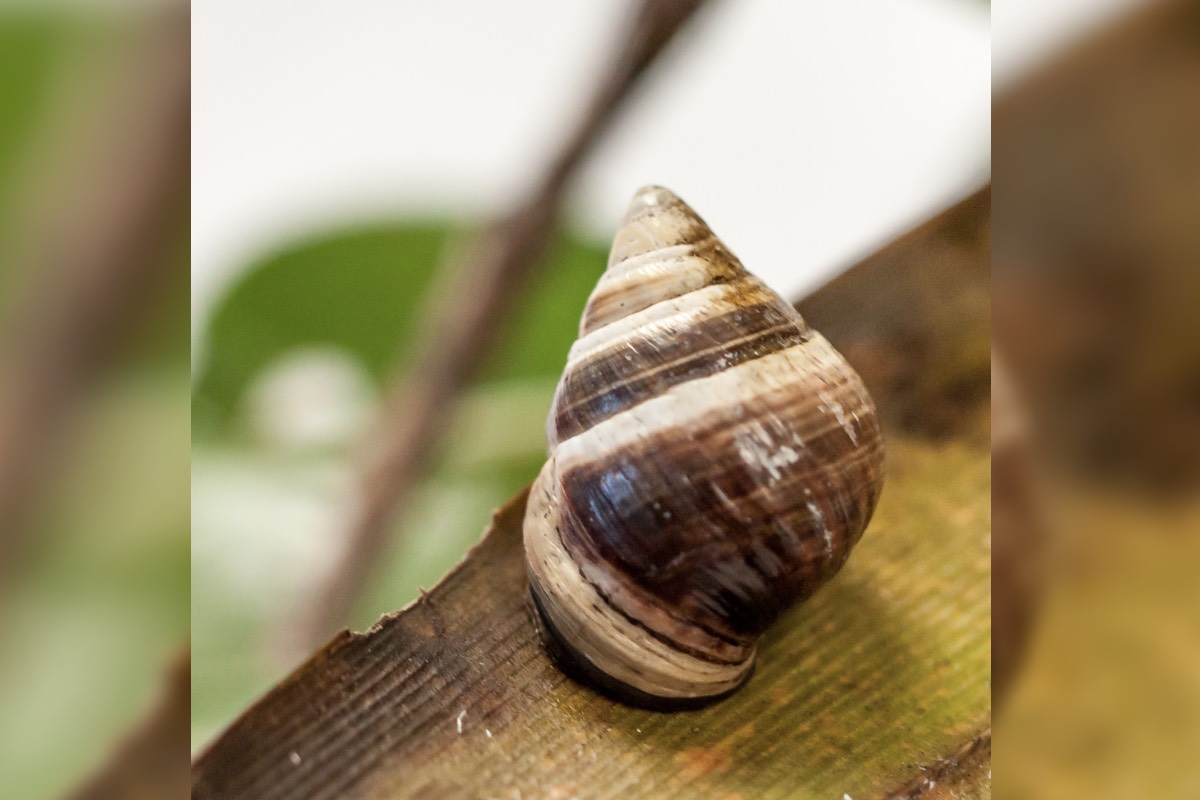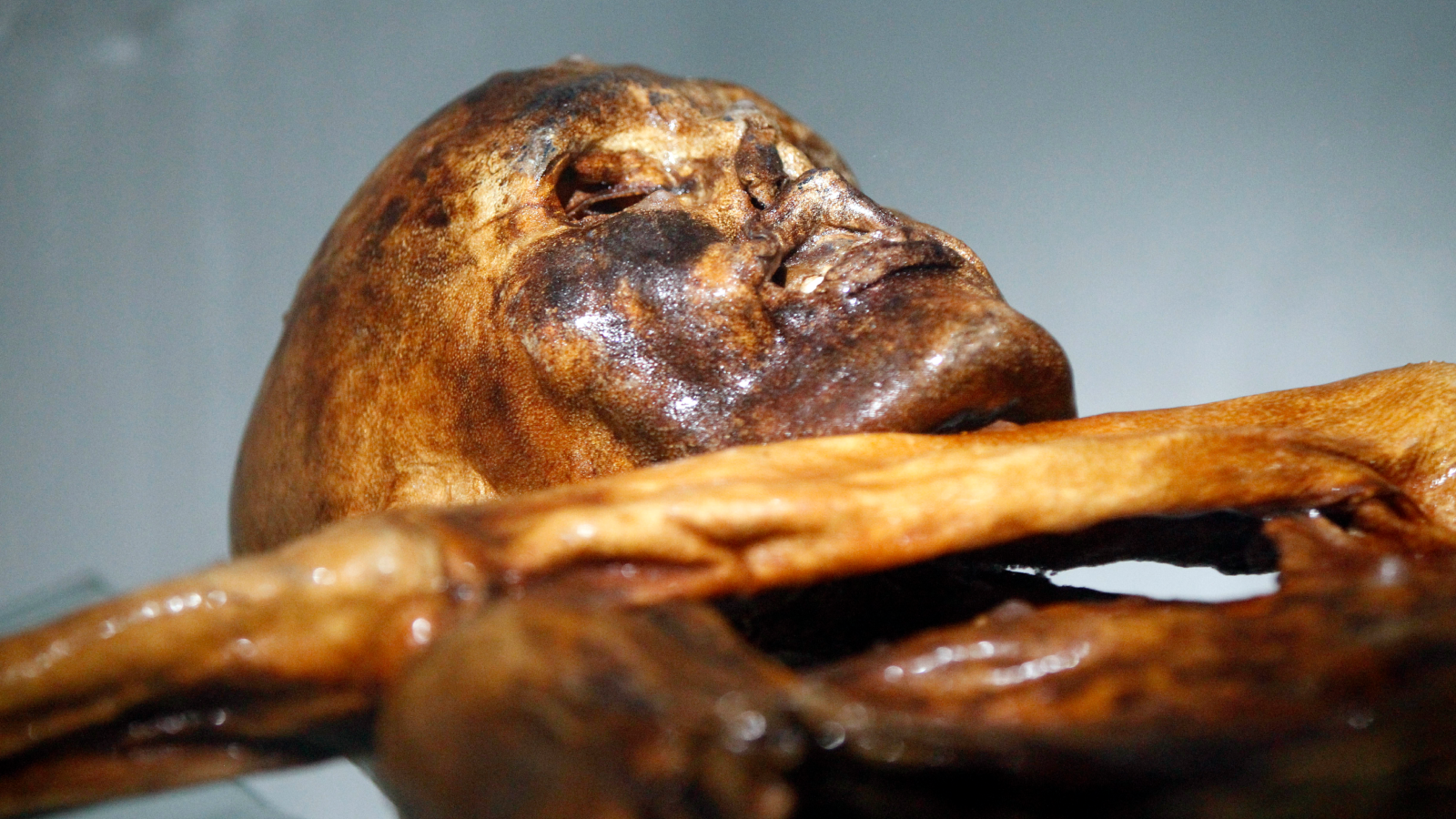George the Snail, the Last and Loneliest of His Kind, Dies

George the snail won't be leaving any more silvery trails in his wake. The 14-year-old champ — the last known snail of his species — died in captivity on New Year's Day, 2019, according to Hawaii's Department of Land and Natural Resources (DLNR).
George belonged to the species Achatinella apexfulva, the first of more than 750 land snail species that Western scientists described from the Hawaiian Islands. The snail was named for the Pinta Island Galapagos tortoise Lonesome George, who was also the last of his kind when he died in 2012.
A. apexfulva snails were once plentiful in the Ko'olau Mountains of Oahu. Because they lived at lower elevations than other snails and were easy to collect, A. apexfulva often ended up in Hawaiian leis, the DNLR said. [Amazing Mollusks: Images of Strange & Slimy Snails]
In fact, the first mention of A. apexfulva dates to 1787, when Capt. George Dixon, an English explorer, landed at Oahu and received a lei with a beautiful snail shell on it, the DNLR said. These snails were so common, that 10,000 could easily be collected in just one day, 19th-century records suggest.
"Anything that is abundant in the forest is an integral part of it," Michael Hadfield, an invertebrate biologist who formerly directed the rare Hawaiian snail captive-breeding program, told National Geographic. For instance, Hawaii doesn't have any native earthworms, so it's largely up to land snails to decompose organic matter.
But A. apexfulva numbers plummeted over the decades, largely because of invasive species that gobbled them up, such as rats, Jackson's chameleons (Kenyan natives brought to Hawaii as pets) and the rosy wolfsnail, a predatory snail from Florida that was brought in the 1950s to eat agricultural pests. In other words, A. apexfulva was so tasty, it barely stood a chance.
So, in 1997, scientists scooped up the last 10 A. apexfulva found in the wild. These snails were taken to the University of Hawaii for captive breeding, but all of the offspring died, except for George.
Get the world’s most fascinating discoveries delivered straight to your inbox.
And George, quite understandably, acted like a loner.
"For a snail, he was a little bit of a hermit," David Sischo, a wildlife biologist with the Hawaii Invertebrate Program, told NPR. "I very rarely saw him outside of his shell."
Snails are hermaphrodites, so George wasn't technically a male because "he" had both male and female reproductive organs. But A. apexfulva snails don't appear to mate without a partner, which George (unfortunately) did not possess.
In 2017, scientists snipped off a 0.07 inch (2 millimeters) piece of George's foot for research purposes. The still-living tissue is now stored in a deep-freeze container at San Diego's Frozen Zoo, but it remains to be seen whether some new technology, such as CRISPR, will be able to one day bring the snail back. As of now, the science isn't there yet, Sischo told WAMC, Northeast Public Radio.
George's death "is a significant loss to locals as he was featured in numerous articles and hundreds of school children have viewed him over the years," the DLNR said in its statement.
Hawaii's other land snails also face an uphill battle for survival, as climate change and invasive species affect the islands' fragile ecosystems.
"As we are all mourning George, I hold tighter the thought that hope still does exist for these native snails," Norine Yeung, the malcology (or study of molluscs) collection manager at the Bernice Pauahi Bishop Museum in Honolulu, where George's remains are now stored in ethanol, told National Geographic. "Please don't forget them."
- Photos: 'Lefty'-Shelled Snails Have 'Righty' Babies
- Giant Owls and Painted Snails: Incredible Creatures from Cuba
- Photos: Gorgeous Neon Malaysian Snails
Originally published on Live Science.

Laura is the managing editor at Live Science. She also runs the archaeology section and the Life's Little Mysteries series. Her work has appeared in The New York Times, Scholastic, Popular Science and Spectrum, a site on autism research. She has won multiple awards from the Society of Professional Journalists and the Washington Newspaper Publishers Association for her reporting at a weekly newspaper near Seattle. Laura holds a bachelor's degree in English literature and psychology from Washington University in St. Louis and a master's degree in science writing from NYU.
 Live Science Plus
Live Science Plus





